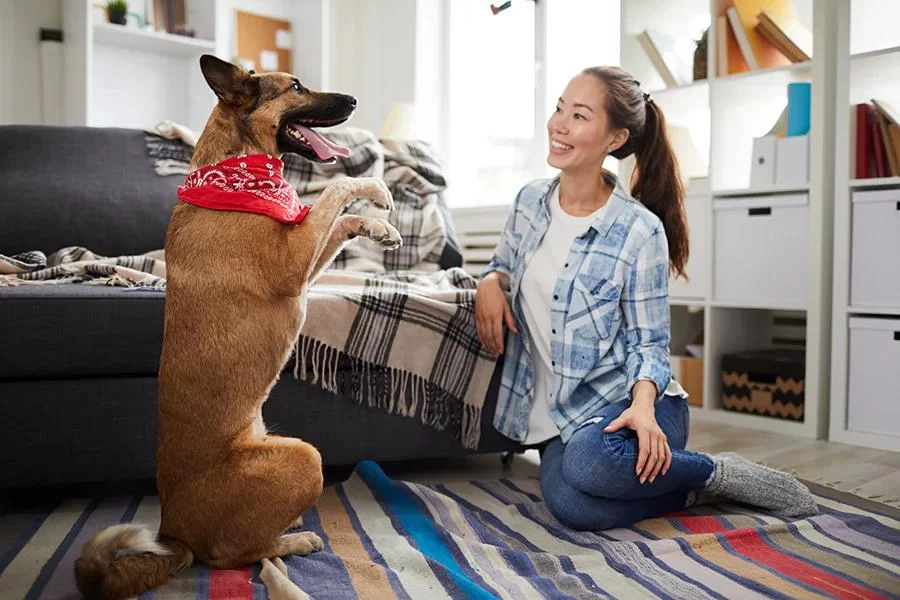Why Understanding Pet Body Language is Essential for Training
When I first began training my dog, Max, I was eager to teach him basic commands, but there was one problem: I wasn’t paying attention to his body language. I was focused on the commands and rewards, but I missed the subtle cues he was giving me. Over time, I realized that understanding Max’s body language during training was just as important as the commands I was giving him. Recognizing his responses helped me become a better trainer and deepened the bond between us.
In this article, I’ll share some insights about interpreting your pet’s body language during training sessions. Whether you're working with a dog, cat, or any other pet, recognizing these signs can dramatically improve your training process and make it a more enjoyable experience for both of you.
Recognizing Common Pet Body Language Signals
Pets communicate with us in ways that often go unnoticed. They don’t speak our language, but they express themselves through their posture, tail movements, eyes, and even the way they breathe. Understanding these signals is crucial for effective training. Here are some of the most common body language cues I’ve observed while training my pets:
1. Tail Wagging and Position
One of the most obvious forms of communication from dogs is their tail. However, the position of the tail and the speed of wagging can have different meanings. For example, when Max wags his tail slowly and low to the ground, it usually means he’s unsure or anxious. On the other hand, if he’s wagging his tail quickly and with his body slightly relaxed, he’s excited and happy. It’s essential to recognize these nuances to understand how he’s feeling about the training process.
For cats, tail position is also a strong indicator of their mood. If your cat’s tail is flicking or lashing rapidly, it usually means they’re irritated or agitated. A relaxed tail, held high, signals confidence or satisfaction, which is ideal during training sessions. I’ve learned that when my cat, Bella, holds her tail high, she’s more receptive to new tricks or commands.
2. Ears and Eye Movement
Max’s ears are another critical indicator of his emotional state. When his ears are perked up and facing forward, I know he’s engaged and focused on the task at hand. But when his ears flatten back against his head, it often signals frustration or fear. I’ve had to slow down and adjust my training approach when I noticed this, as it usually meant he was overwhelmed.
Cats also communicate with their ears. When Bella’s ears are pointed forward, it means she’s interested or focused, but when they’re flattened against her head, she’s upset or agitated. Understanding these signals has helped me adjust my training techniques to suit her temperament, making training much more effective and positive.
3. Posture and Body Stance
The way your pet positions their body speaks volumes about how they’re feeling during training. A relaxed, upright stance often indicates a confident and engaged pet. On the other hand, a hunched body or a pet that is sitting down and avoiding eye contact may be showing signs of stress or fear. I noticed this particularly with Max during our early training sessions. If he sat down and looked away from me, it meant I was pushing him too hard or too fast. So, I adjusted my approach, incorporating more positive reinforcement, and his posture became more open and willing.
For cats, a low or crouching posture can indicate nervousness, while an upright and steady posture shows they’re ready to engage. When Bella was younger, she would often crouch when unsure of a new activity, like when I tried to teach her to jump through a hoop. Recognizing this allowed me to slow down and introduce the trick at a more comfortable pace for her.
4. Vocalization
While we often associate vocalizations with communication, pets use sounds to express a wide range of emotions. Dogs like Max may bark to show excitement or to get my attention, while cats like Bella may purr when content or hiss when threatened. During training, I’ve learned to listen to these sounds to gauge how they’re feeling about the activity.
For instance, if Max begins barking excessively during training, it could indicate that he’s either frustrated, overwhelmed, or excited. By paying attention to the tone and frequency of his barks, I can adjust my training methods accordingly. Similarly, Bella’s meowing can give me clues as to whether she’s engaged or frustrated with a task.
How to Adjust Training Based on Body Language
As I’ve continued training my pets, I’ve learned that one of the most important aspects is adjusting my approach based on their body language. If Max is showing signs of anxiety, like lowered ears or a tucked tail, I know that I need to slow down and give him more breaks. On the other hand, if he’s showing signs of excitement, I can keep the momentum going by reinforcing positive behavior with treats and praise.
Similarly, Bella’s body language plays a significant role in how I train her. If she’s showing signs of disinterest, like turning her head away or walking off, it’s a clear signal that I need to make the training session more engaging or less demanding. I’ve found that breaking training into shorter, more enjoyable sessions helps keep her engaged and eager to learn.
Recognizing Stress Signals and Avoiding Overtraining
It’s essential to recognize when your pet is becoming stressed during training. For dogs, signs of stress may include excessive yawning, licking their lips, or showing the whites of their eyes. Cats may exhibit similar stress signals, such as dilated pupils, twitching tails, or attempting to hide. I’ve learned to watch for these signs to avoid overtraining and to ensure my pets are comfortable throughout the process.
Overtraining can lead to frustration, confusion, and even behavioral issues. I make sure to monitor their body language closely to know when to take a step back. If Max begins to withdraw or shows signs of fatigue, I immediately stop and give him time to rest. Likewise, if Bella seems overwhelmed or agitated, I pause the training and let her regroup.
Real-Life Example: Training Max to Sit
When I first began training Max, one of the most basic commands I wanted him to learn was “sit.” However, it wasn’t as simple as just telling him to do it. Initially, Max would resist the command and show signs of stress, like pacing and barking. At first, I didn’t know what to do. But then I started paying closer attention to his body language. I noticed that when I asked him to sit, his ears would flatten slightly and his tail would tuck in, signaling discomfort.
By adjusting my approach, using more positive reinforcement and taking breaks when I saw those signals, Max quickly learned the command. His tail relaxed, his ears perked up, and he was more eager to follow the command. This experience reinforced the importance of understanding my pet’s body language in training.
Conclusion
Understanding your pet’s body language during training is an invaluable tool that enhances the learning experience and strengthens the bond you share. By recognizing key body language cues, you can adjust your training methods to ensure your pet feels comfortable, engaged, and positive throughout the process. Whether you’re training a dog or a cat, taking the time to understand their signals will not only help improve training results but also create a more enjoyable experience for both of you.












